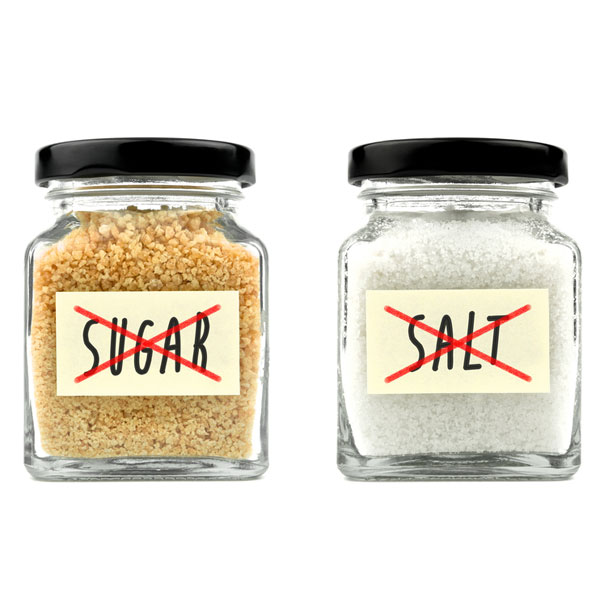What’s the issue with excess sugar and salt? Simply this: you don’t need them, and they can lead to weight gain and increased risk factors for heart disease, stroke and type 2 diabetes.
But taking sugar and salt out of the equation may seem like an impossible mission – food just tastes horrible without them, yes?
Well, no. It’s all about what you’re used to and how your body works. Your taste buds renew every 10-14 days, so within two weeks your body will have adjusted to these reduced flavour levels and be thriving on the changes.
You’ll be cutting out thousands of empty calories and improving those health risks – now that’s what we’d call hitting the sweet spot…
Tips to get you started
• Switch added sugar for sucralose sweetener – it’s around 650 times sweeter than sugar, so only very small amounts are needed. Although sucralose is made from sugar, it is not recognised by the body as a carbohydrate so it adds zero calorie.
• LighterLife Drink Mixes are a great way to swap out sugary, tooth-damaging squash without compromising on flavour.
• Use herbs and spices in place of table salt when you’re cooking. The British Heart Foundation recommends pepper, basil, cayenne pepper, chives, ginger, paprika, mint and rosemary.
• Get into another good habit – checking the food labels to help you make healthier choices. Go for foods low in salt (0.3g or less per 100g, or 0.1g sodium per 100g – green on the traffic light labelling) and minimise “red” traffic light foods (more than 1.5g of salt, or 0.6g sodium, per 100g). Look for low-sugar foods when you’re shopping, too – 5g or less of total sugar per 100g.


